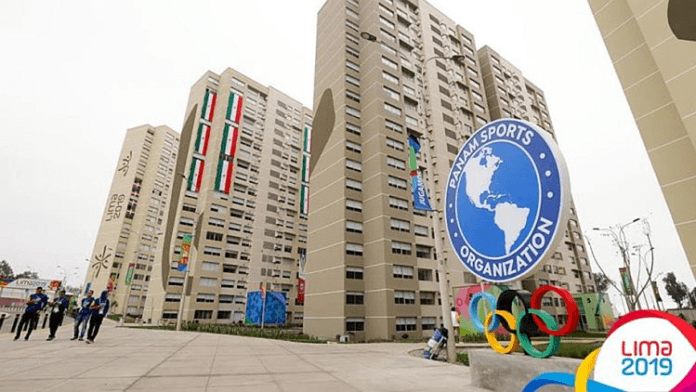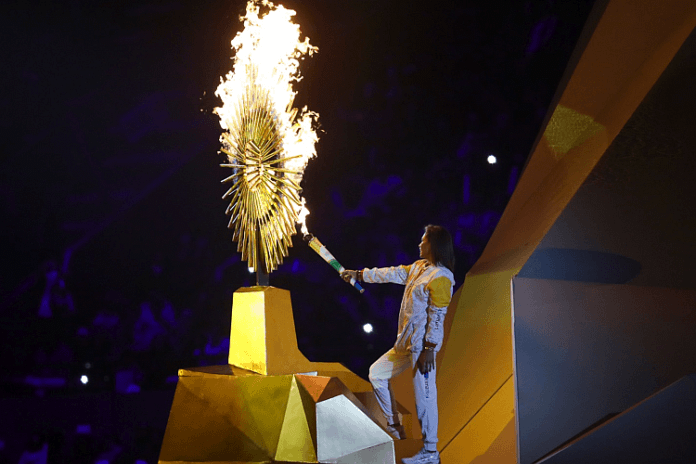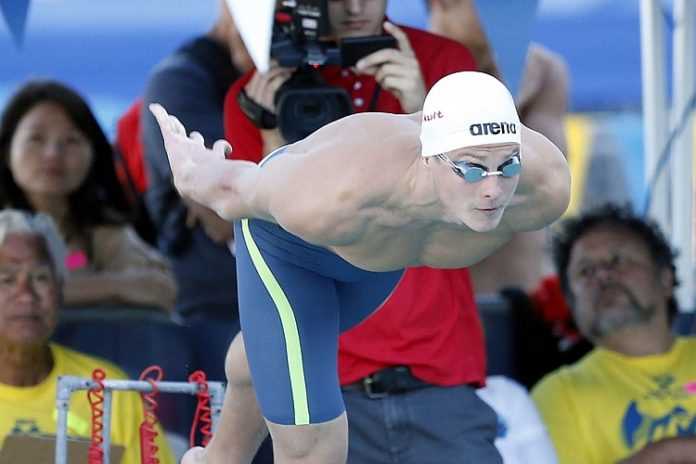= TSX DAILY ~ 9 August 2019 =
| 1. | LANE ONE: Lima has done well, but what is the future of the Pan American Games?
After some doubts about construction, the Lima organizers can be proud of the job they have done in staging the eighteenth Pan American Games – so far – as the event heads into its final weekend of competition.
The PanAm Sports organization, which owns the event, is also giddy about the event, but knows it has challenges ahead of it. The event has generated very modest interest in the U.S. despite excellent live coverage from Lima on ESPNU and ESPN Deportes and about the same reaction in Canada. Those are two key markets.
What can be done about it, and what is the future of this event, which dates back to 1951? It is held only one every four years and this year’s staging reportedly cost $1.2 billion, of which about two-thirds appears to be paid by Peruvian taxpayers.
Ivar Sisniega, the highly-regarded Secretary-General of PanAm Sports suggested in an interview that a closer tie to Olympic qualification will help in the future. But a look at the history of the Pan American Games suggests that other factors are responsible for its decline in interest not only among North American media, but among its top athletes as well.
There are other options, and the P.A.G. may be better off looking to find a better place on the international sports calendar in the second year after an Olympic Games, tightening up on the number of events and athletes involved and considering that other competitions – like the IAAF Diamond League and FINA Swimming World Cup – pay prize money where the Pan American Games does not.
Has time passed by the Pan American Games? Not necessarily, but it’s not 1951 any more either.
| 2. | PAN AMERICAN GAMES: U.S. swimmers win six more events and 11 more medals, as U.S. passes 200-medal mark
It’s simply hard to believe that USA Swimming has sent its third team to Lima for the 2019 Pan American Games. The squad in Lima has been exemplary – except for one big mistake on Thursday – and won another six events and 11 medals, taking its total to 31 of the 74 total medals awarded so far, with Brazil second at 20. On Thursday evening:
● Margo Geer won the 100 m Freestyle in 54.17, giving her an individual gold to accompany her two relays golds so far.
● Annie Lazor and Will Licon (pictured below) led 1-2 U.S. finishes in the 200 m Breaststrokes in fast times. Lazor set a Pan American Games record of 2:21.40, which would make her no. 4 in the world for 2019 if not for her 2:20.77 (no. 2) in May. She led Bethany Galat home, who finished in 2:21.84, moving her to no. 6 in the world for the year. Lazor’s win completed a sweep of the 100 and 200 m Breast events.
Licon, who was given a public warning by the U.S. Anti-Doping Agency for the use of an inhaler that had a prohibited ingredient – but which did not register in an out-of-competition doping test – swam and won the men’s 200 m Breast in 2:07.62, a meet record that places him no. 8 in the world for 2019. Nic Fink (USA) won the silver in 2:08.16, which ranks 12th.
● Phoebe Bacon and Daniel Carr won the 100 m Backstroke events, Bacon in 59.47 (no. 13 for 2019) and Carr completed a 100-200 m double in 53.50, a season’s best and no. 16 on the world list.
● Andrew Abruzzo won the 800 m Free to go along with his win in the 400 m Free.
Brazil’s Marcelo Chierighini held on to win the men’s 100 m Freestyle in 48.09, but American Nathan Adrian continued his comeback from testicular cancer in second with a season-best 48.17, with American Michael Chadwick third in 48.88.
The only real disappointment for the U.S. came in the Mixed 4×100 m Medley Relay, where the team of Beacon, Cody Miller, Tom Shields and Geer won by almost six seconds in 3:42.96, but was disqualified, apparently on Miller’s leg. Brazil was handed the gold medal after finishing second in 3:48.61.
USA Swimming tweeted later, “The U.S. has been disqualified for two breaststroke kicks off the turn. While we disagree with the decision, Pan Am rules do not allow for official video review.”
More highlights:
● The powerful U.S. women’s Freestyle wrestling team got into action and collected gold medals from Whitney Conder (50 kg: pictured above ~ won 10-2) and Sarah Hildebrandt (53 kg: won 10-0), and a silver medal from Jenna Burkert (57 kg: lost 2-1).
● In track & field, there were upsets galore, no doubt in part thanks to 60-degree weather and humidity readings above 80%!
Costa Rica’s Andrea Vargas set a national record and defeated a field that included Chanel Brissett of the U.S., 12.82-12.99, with Sharika Nelvis of the U.S. seventh in 13.23. Then American Johnny Gregorek looked to be in good position to win the men’s 1,500 m over Canada’s William Poulsen, but then Carlos Villareal of Mexico, who finished fourth in the Pac-12 Champs for Arizona, flew down the final straight to win in 3:39.93.
Jamaica’s Shericka Jackson won the women’s 400 m as expected (50.73), but the men’s 400 m was a stunner, with Anthony Zambrano of Colombia finishing strongly to win in 44.83, surprising Jamaica’s Demish Gaye (44.94) with 17-year-old Justin Robinson of the U.S. coming through in third (45.07).
Canada’s Sage Watson, who also went to Arizona, won the 400 m hurdles with a charge down the straight in a season’s best of 55.16, then was disqualified for a trail-leg violation and running out of her lane. That gave the gold medal to American Anna Cockrell … for a few minutes. The Canadians protested and Watson was reinstated; the U.S. declined – after seeing video of the race – to counter-protest.
The men’s race was even crazier, with Dominican Juander Santos taking a big lead and looking like a sure winner, then crashing over the final hurdle and sprawling on the track. Brazil’s Alison Alves dos Santos sailed past for a 48.45 lifetime best and the gold medal, with Amere Lattin of the U.S. (48.98) flying in for second. Santos got up and finished, dazed, but with the crowd applauding, in 2:09.37.
Defending champions Lavern Spencer (LCA) and Yarisley Silva (CUB) both won their events, with Spencer clearing 1.87 m (6-1 1/2) in the cold and Silva clearing 4.75 m (15-7) to win on her last remaining jump over Katie Nageotte of the U.S. (4.70 m/15-5).
Some 276 of the 419 events have been completed in the Games, with the U.S. now leading with 206 total medals (82-69-55), with Brazil (115) and Canada (113) fighting for second. While the American medal count is impressive, there’s little likelihood of any records, as the U.S. won an astonishing 425 medals in 1995. Complete results of the 2019 Games are here.
| 3. | GYMNASTICS: Mikulak sailing at USA Gymnastics Nationals, but who is Shane Wiskus?
Five-time U.S. All-Around champ Sam Mikulak is sailing toward a sixth title, which would tie him for second all-time, after the first of two rounds of the USA Gymnastics National Championships at the Sprint Center in Kansas City, Missouri.
After completing the first of two All-Around programs, Mikulak has a solid 86.750-84.000 advantage over 2017 All-Around title winner Yul Moldauer. But the surprise has come from Minnesota sophomore Shane Wiskus, the two-time NCAA All-Around runner-up, who stands tied with veteran Akash Modi for third at 83.950.
Mikulak finished in the top four in five of the six events and won on Floor (14.650), Parallel Bars (14.200) and Horizontal Bar (also 14.200). The men’s competition continues on Saturday with the second All-Around. The women will take the stage tomorrow (and on Sunday); more details are here.
| 4. | SWIMMING: Simonova more than simply iron, now a winner at the Jinan World Cup!
Russia’s Vitalina Simonova has taken the role usually reserved for the “Iron Lady” – Hungary’s Katinka Hosszu – and swam 14 of 16 individual events in last week’s Tokyo opener of the FINA Swimming World Cup.
She’s at it again at this week’s stage, in Jinan (CHN), but with a major difference. As the fields are weaker than in Tokyo, she broke through and won her specialty, the 200 m Breaststroke in a season’s best of 2:24.52. She’s still on schedule to swim in 14 events again, but she will have some hardware to take home with her this time.
Hosszu was also in good form, winning the 200 m Butterfly in 2:07.26, which would rank her no. 7 in the world this year but for her existing 2:06.94 from May. The best performance on Thursday came from China’s world-record holder, Xiang Liu, who won the 50 m Backstroke in 27.35, the second-fastest mark in the world this year behind only Olivia Smoliga’s 27.33 that won the World Championships gold for the U.S.
The men’s points leader, Russia’s Vladimir Morozov, won the 50 m Free in 21.50, a season’s best that keeps him at no. 5 on the 2019 world list.
The meet continues on Friday and Saturday; our summary of Thursday’s action is here.
| 5. | EQUESTRIAN: When it comes to money, the FEI is not horsing around!
The Federation Equestre Internationale (FEI), international governing body for equestrian, released its annual report, including its 2018 financial statements.
Reported in Swiss francs (essentially equal to USD at current exchange), the federation showed 62.6 million in revenue, only 4% of which came from the IOC’s television revenue sharing program. Expenses were 58.9 million for operations, but there was an investment loss of 3.0 million for a total cost of 61.9 million, and a smaller surplus of 724,148 francs.
The biggest revenue contributor was sponsorship, at 27.8 million, followed by event fees (about 11.2 million). As of the end of 2018, the FEI has assets of CHF 64.6 million.
Very, very impressive.
| 6. | DOPING: When a USADA Doping Control Officer knocks on your door, you can expect …
The U.S. Anti-Doping Agency tweeted Thursday: “Athletes: when a USADA Doping Control Officer knocks on your door, you can expect them to be professional, accommodating, and knowledgeable.”
Clicking further leads to a 2017 post that explains:
● Professional: “It’s no secret that the sample collection process can be discomforting, especially if it’s an athlete’s first time providing a sample. … every USADA DCO undergoes extensive hands-on training and a rigorous certification process before entering the field.”
● Accommodating: “Athletes in USADA’s registered testing pool are also required to file Whereabouts and be available for no-notice testing at any time. These rights and responsibilities are key to ensuring that USADA maintains a robust anti-doping program that protects clean sport and athletes’ rights.
“While USADA DCOs are charged with upholding testing protocols, they also have athletes’ wellbeing at the forefront of their minds and understand that athletes are people with busy lives, responsibilities, and pressing concerns that aren’t related to anti-doping.”
● Knowledgeable: “DCOs are sometimes the only representative from USADA that athletes will interact with face-to-face, so athletes are encouraged to ask questions and use their DCO to learn more about anti-doping. Most USADA DCOs can provide information on a wide range of topics, including testing protocols, the results management process, therapeutic use exemptions (TUEs), and the many tools for athletes that address prohibited substances and methods.”
Doping control is one of the most unpleasant aspects of being a world-class athletes, but as the saying goes, it’s a necessary evil. Let’s hope the USADA’s team lives up to its advertising.


























